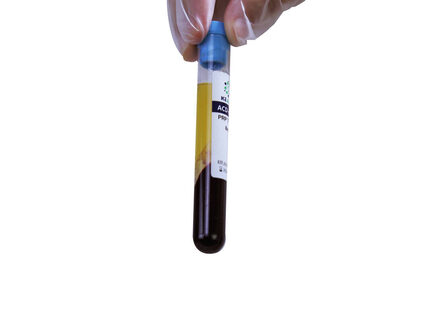Platelet-rich plasma (PRP) has gained popularity as a supplement for tissue culture. PRP is rich in growth factors and cytokines, making it an attractive addition to cell culture media. When used as a scaffold, PRP can also provide a three-dimensional environment for cells to grow in. However, when cells are grown in PRP, they can become embedded in the plasma gel, making it challenging to retrieve them for downstream applications. Here are some tips on how to retrieve cells growing embedded in plasma gel while using PRP in tissue culture.
Use a protease to digest the plasma gel: One way to retrieve cells from the PRP gel is to use a protease to digest the plasma gel. Trypsin, for example, can be added to the culture medium to digest the plasma gel and release the cells. After a short incubation period, cells will detach from the gel, and they can be collected by centrifugation.
Mechanical disruption: Another way to retrieve cells from the PRP gel is by mechanical disruption. The plasma gel can be broken down by pipetting the culture medium vigorously or by using a cell scraper. This process can be repeated until the plasma gel is completely broken down, and the cells are released.
Centrifugation: Centrifugation can also be used to retrieve cells from PRP gel. After incubation with a protease or mechanical disruption, the cell suspension can be centrifuged to pellet the cells. The supernatant can be discarded, and the cell pellet can be resuspended in fresh culture medium.
Use a cell strainer: Another way to retrieve cells from the PRP gel is by using a cell strainer. The plasma gel can be placed on a cell strainer, and the cells can be collected by gentle centrifugation. The cells will pass through the strainer while the plasma gel is retained on the strainer.
Use a different scaffold: If retrieving cells from the PRP gel is proving difficult, consider using a different scaffold. Other scaffolds like collagen, fibrin, or hyaluronic acid can provide a three-dimensional environment for cells to grow in, and they may be easier to work with.
In conclusion, retrieving cells growing embedded in plasma gel can be challenging when using PRP in tissue culture. Using a protease, mechanical disruption, centrifugation, cell strainer, or a different scaffold can help to retrieve cells efficiently.








